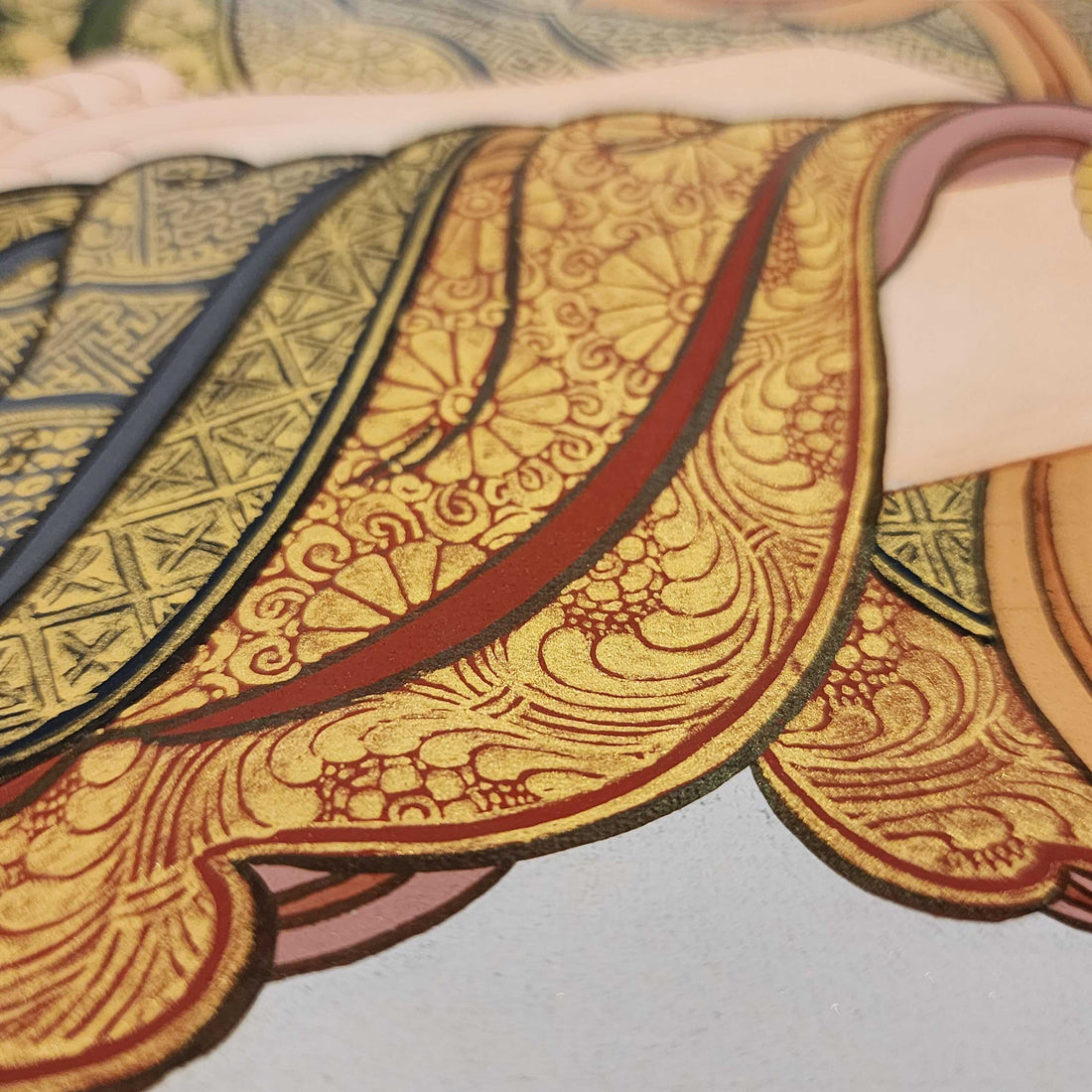
The Five Buddha Families in Tibetan Thangka Mandalas and Their Meanings
Share
Introduction
In Tibetan Buddhism, the Five Buddha Families represent different enlightened qualities that help practitioners overcome obstacles and transform negative emotions. These families often appear in Mandala Thangkas, where they form the foundation of meditation practice. Understanding their symbolism deepens both spiritual connection and appreciation of the art.
Who Are the Five Buddha Families?
The Five Buddha Families, also known as the Five Dhyani Buddhas, are celestial Buddhas embodying wisdom, compassion, and transformation. Each family corresponds to a color, direction, and quality of enlightenment.
The Five Buddha Families and Their Meanings
—Vairocana (Center – White)
Quality: Universal wisdom, clarity.
Transforms: Ignorance into wisdom.
Iconography: White body, seated in the center of the mandala, often holding a Dharma wheel.
—Akshobhya (East – Blue)
Quality: Mirror-like wisdom, steadfastness.
Transforms: Anger into clarity.
Iconography: Blue body, holding a vajra (thunderbolt).
—Ratnasambhava (South – Yellow)
Quality: Generosity, equanimity.
Transforms: Pride into compassion.
Iconography: Golden-yellow, holding a jewel or treasure vase.
—Amitabha (West – Red)
Quality: Infinite light and compassion.
Transforms: Desire into wisdom.
Iconography: Red body, hands in meditation mudra.
—Amoghasiddhi (North – Green)
Quality: Accomplishment and fearless action.
Transforms: Jealousy into wisdom of accomplishment.
Iconography: Green body, holding a double vajra.
The Mandala Representation
In Thangka art, the Five Buddha Families are often painted within a mandala structure:
—Vairocana sits at the center, symbolizing unity.
—The other four Buddhas are placed in the four cardinal directions.
—Together, they represent the wholeness of enlightenment, with each quality balancing the others.
Symbolism in Meditation
Practitioners use these mandalas as visual maps for meditation:
—Visualizing each Buddha helps transform negative emotions into wisdom.
—The mandala structure reflects the universe in perfect balance.
—The colors and directions act as guides for spiritual practice.
Modern Appreciation
Collectors value Five Buddha Families Thangkas for their deep symbolic meaning and vibrant use of color. For practitioners, they serve as powerful meditation tools that connect daily practice with timeless Buddhist wisdom.
Conclusion
The Mandala of the Five Buddha Families is one of the most profound themes in Tibetan Thangka art. It not only reflects Buddhist philosophy but also provides a practical guide for transforming the mind, making it both spiritually and artistically significant.
